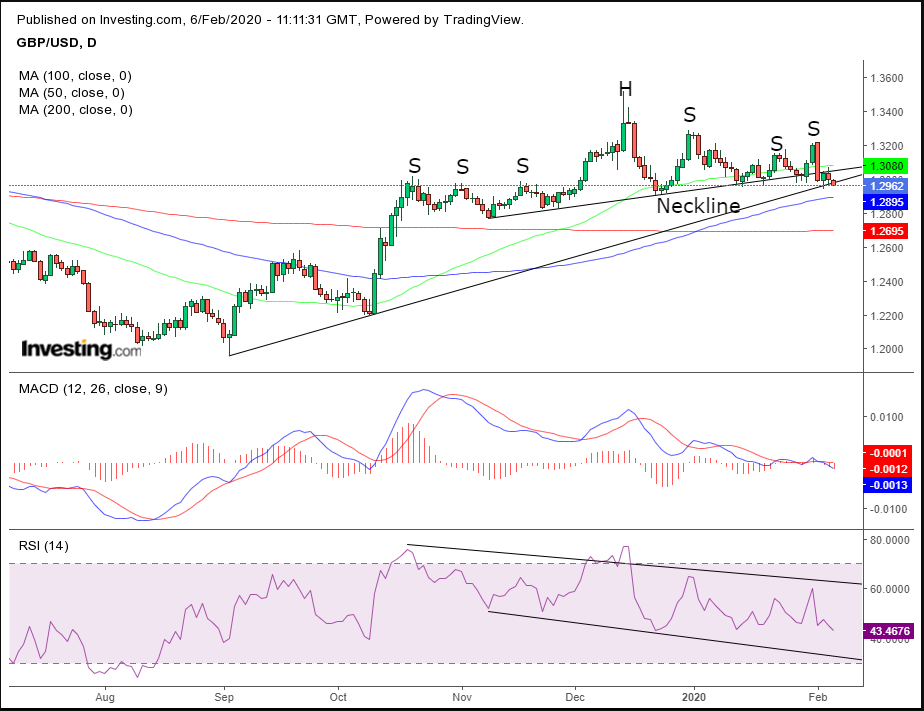United Homes Group stock plunges after Nikki Haley, directors resign
The UK economy rebounded in the past couple of years, as the services sector hit a 16-month high and retail sales remained strong. However, rising inflation, with no concomitant increase in wages, is now chipping away at buying power, threatening the outlook for what was the best-performing large, advanced economy in 2016.
The “economic damage from Brexit will be up to 10 times the boost from budget spending hikes” economists at the UK's National Institute of Economic and Social Research (NIESR) have now warned. This negative and deteriorating forecast has in turn been weighing heavily on the pound.

Sterling has been moving sideways since October, but a deeper look reveals that it wasn’t trading randomly. Its pattern reflects the struggle between the bears and the bulls — and the bears have grabbed hold of the upper hand.
Cable developed a complex H&S top, whose downside breakout is now forcing through the rising trend line since early September.
The price already cut through the 50 DMA. A fall beneath the uptrend line that included a drop below the 100 DMA and the 200 DMA, at the 1.27 area, would complete the market's view of a reversal.
Both the MACD and the RSI have been providing a negative divergence to the price’s ascent since November.
Trading Strategies
Conservative traders should wait for a close below the 200 DMA, then for evidence of resistance upon a pullback.
Moderate traders would use the likely support of the 200 DMA to retest the broken uptrend line and the H&S top’s resistance.
Aggressive traders may short at will, provided they have prepared a trade plan, with a favorable risk-reward ratio, before they do so.
Trade Sample - Short Position
